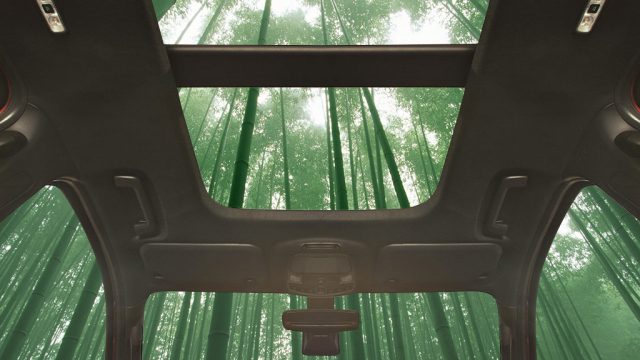Innovation Married To Sustainability. Are You There Yet?
Pick the odd one out: carbon fiber, steel, bamboo. The answer, of course, is none of them.
You’ve probably sat on it, built with it, and maybe even eaten it, but did you know that your car could be next to benefit from bamboo – one of the world’s strongest natural materials?
While big investment in research has led to breakthroughs in new materials like super strong carbon fiber and lightweight aluminum, nature’s wonder material may have been growing – at up to one meter in a day – in our own backyard.
“Bamboo is amazing,” said Janet Yin, a Materials Engineering Supervisor at Ford’s Nanjing Research & Engineering Centre. “It’s strong and flexible, and because it’s plentiful in China and many other parts of Asia, it’s totally renewable.”
The benefits of bamboo have been recognised for centuries. Thomas Edison experimented with it while making the first light bulb. In building, its tensile strength (or how much it can resist being pulled apart) is well known, as it can rival or even better some types of metal. As it grows to full maturity in just two to five years – compared to up to decades for other trees – bamboo also regenerates easily.
Over the past several years, Janet and her team have worked with suppliers to evaluate the viability of using bamboo in vehicle interiors and to make extra strong parts by combining it with plastic. It is found that bamboo performs comprehensively better than other tested synthetic and natural fibers in a range of materials tests, from tensile strength tests to impact strength tests. It’s also been heated to more than 100 degrees Celsius to ensure it maintains its integrity.
And, while bamboo may be the latest ‘kid on the block’, Ford is familiar with the use of sustainable and recycled materials in its vehicles in Asia Pacific.
Before a sustainable or recycled material is given the green light, it needs to meet Ford’s global standard. In Asia Pacific, a thorough test and analysis is conducted on each material to prove that it is as good – if not better and more durable – than its virgin material equivalent.
Another company is Godrej & Boyce, the holding company of the Godrej Group, which has designed a range of bicycles built from bamboo.
The frames of the bicycles are entirely bamboo, giving them a durability and lightness unmatched even by conventional steel and aluminum frame cycles. Moreover, they are more sustainable to make as bamboo is a fast-growing grass and therefore very sustainable. Their manufacturing process is not reliant on electricity from coal-burning power plants, and the economic benefits of their manufacture are spread along every step of the process, from sourcing-to-sale.
Commenting on the launch, Vijay Crishna, Executive Director, Godrej Lawkim said, “The Bambusa bicycle is in the direction of pushing boundaries of what’s possible in an environmentally and economically sound manner. Bamboo has a greater tensile strength (or resistance to being pulled apart) than steel, while its attribute of being 4 times as absorbent as carbon fiber gives a smoother ride even on bad roads. Having travelled 4400kms across the length of India during the monsoons, the bike has proved its strength and sturdiness on the road under the toughest conditions”
In every way possible, corporate houses should make the effort to a commitment to reduce, reuse and recycle. This, in order to works towards global sustainability strategy and lessen environmental footprint while accelerating development worldwide.
Other global examples innovations are coconut-based composite materials, recycled cotton material for carpeting and seat fabrics, and soy foam seat cushions and head restraints.
Thank you for reading the story until the very end. We appreciate the time you have given us. In addition, your thoughts and inputs will genuinely make a difference to us. Please do drop in a line and help us do better.
Regards,
The CSR Journal Team













